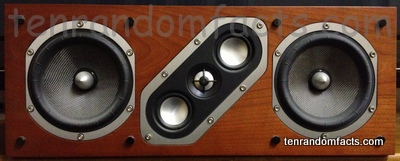Boom, Boom, Boom
- Loudspeakers are also known as ‘speakers’ and they convert and project sound in response to an electric signal.
- Loudspeakers are found in most radios, music players and TV receivers, and can be also found in many other electrical devices that produce sound.
- In 1861, Johann Philipp Reis put a loudspeaker in his telephone, and in 1876, Alexander Graham Bell gained a patent for a loudspeaker as part of his telephone, and Ernst Siemens, a German, patented an improved loudspeaker in 1877.
- Loudspeakers can be either wired using audio cables, or wireless with the speaker transmitting sound via radio signals.
- The position of a loudspeaker in a room, as well as the position of the person, the size of the room, and how sound absorbing the room is, all affect the sound quality coming from the speaker.
- The most common type of speakers uses a cone that is attached to an electromagnet, which responds to an electrical signal, causing the cone to vibrate and produce sound.
- Many different types of loudspeakers have been produced over the years, including horn, electrostatic, magnetostrictive, bending wave, flat panel, plasma arc and digital loudspeakers.
- Loudspeakers are usually housed in a type of box, so the sound waves at the back and the sound waves at the front don’t interfere with each other and negatively affect the sound quality.
- Loudspeakers often have different drivers to reproduce different frequencies of sound, and these are called ‘woofers’, ‘sub woofers’, ‘tweeters’, ‘supertweeters’ and ‘mid-range speakers’.
- Loudspeaker cones or diaphragms are usually made from paper, polypropylene or aluminium, or a combination of these materials.
Bibliography:
Loudspeaker, 2013, Wikipedia, <http://en.wikipedia.org/wiki/Loudspeaker>
Loudspeaker, n.d., Encyclopaedia Kids.net, < http://encyclopedia.kids.net.au/page/lo/Loudspeaker>






